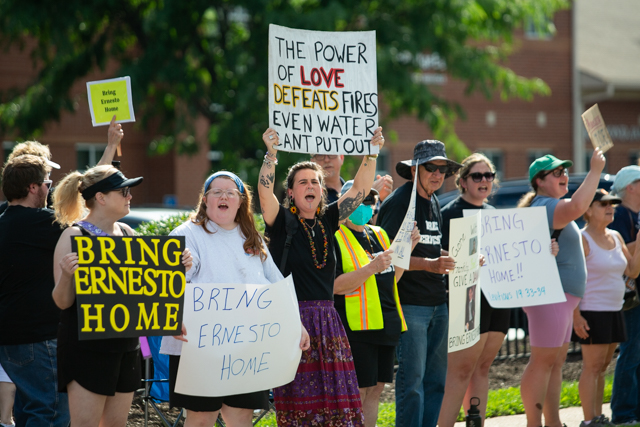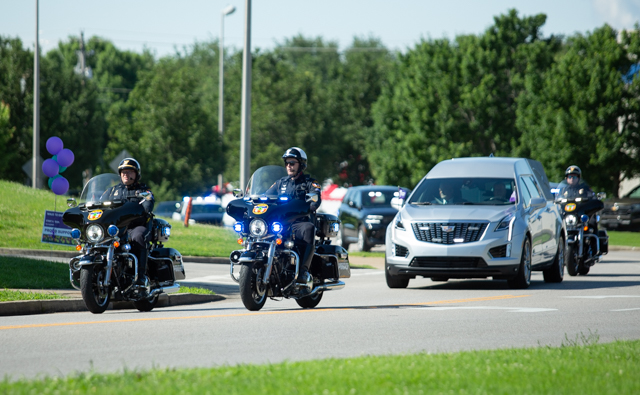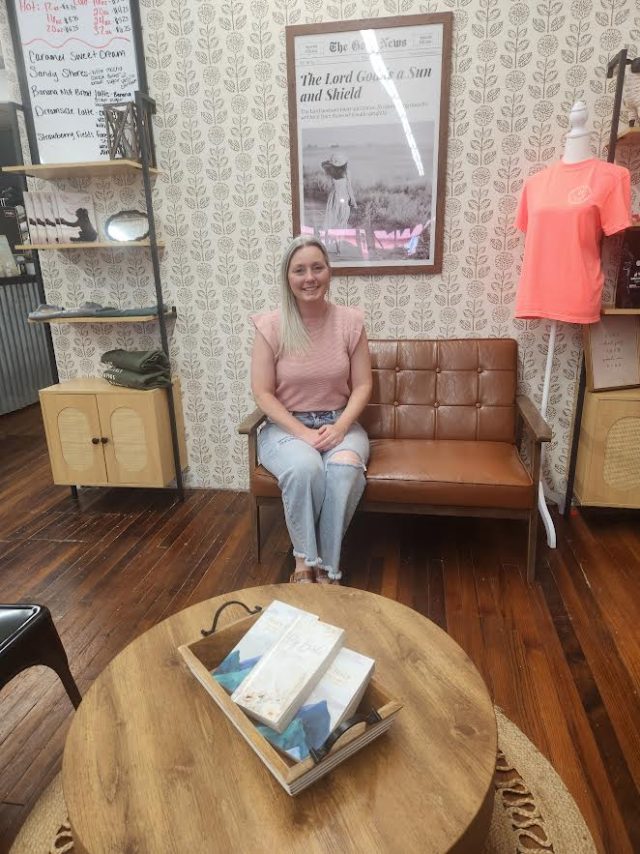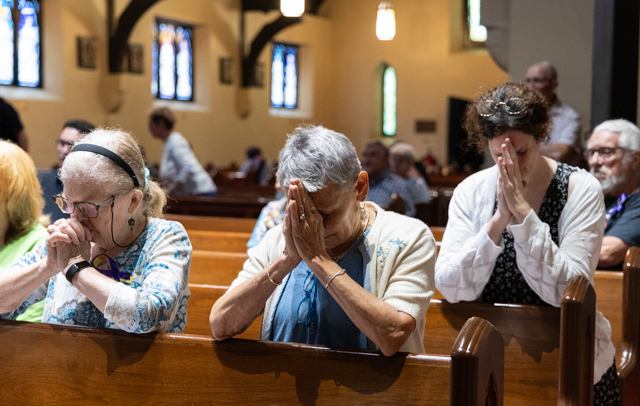Witness: Slaying victim was drug informant
Published 12:00 am Thursday, May 28, 2009
MORGANTOWN — According to witness testimony Tuesday, less than a year before she was shot to death in 2000, Teresa Childres had become a drug informant for the Butler County Sheriff’s Office and had attempted to gather incriminating information on Dennis Childers, who is on trial for murder in connection with her death.
Former Butler County Sheriff’s Deputy Scott McIntosh testified Wednesday in Butler Circuit Court about the relationship his office and Childres had forged in 1999.
Now a conservation officer with the Kentucky Department of Fish and Wildlife, McIntosh said he was approached 10 years ago by Childres about helping the sheriff’s office.
“She told me the first time I met her that there was quite a bit of drug activity in the Leonard Oak (Road) area,” McIntosh said, referring to the road where Dennis Childers, 44, lived prior to his 2007 arrest on charges of murder, kidnapping and tampering with physical evidence. “She said she knew (Childers) and could provide us with information we could arrest him on.”
Under questioning by Butler County Commonwealth’s Attorney Tim Coleman, McIntosh said he was later made aware that Childres’ son had been arrested in Ohio County and she believed that becoming an informant would have helped her son face a lighter punishment.
McIntosh provided Childres with a microcassette recorder, talked with her in person three times and over the phone several additional times, but he said Childres did not provide any tapes with information on Dennis Childers, who, along with Ronnie Burden, was charged in July 2000 in U.S. District Court with manufacturing methamphetamine, manufacturing marijuana and possession of a firearm in a drug trafficking crime.
“She tried to play a tape back over the phone,” McIntosh said.
Online records show that Childers was given a 15-month prison sentence and three years of supervised release after pleading guilty in federal court to the methamphetamine manufacturing charge.
In his opening statement to the jury, Coleman attempted to establish that Childers shot Childres to death after he learned that she had been recording their meetings when the recorder fell out in front of him.
Coleman said Childres was shot at point blank range with a 20-gauge shotgun, and told the jury that David Cardwell, in exchange for immunity, would testify that he was told by Childers to shoot Childres, 35, and that he struck her on the head with a hammer on the night she died.
“We had to make a deal with David Cardwell, ‘If you aren’t the killer and if you’ll tell us what happened, we won’t prosecute you,’ ” Coleman told jurors during his opening statement.
Brownsville attorney Gary Logsdon, representing Childers, acknowledged his client’s criminal record during his opening statement, but also tried to impress upon jurors that the prosecution built its case in large part due to witnesses who, under threat of imprisonment for various criminal charges, gave information identifying Childers as the killer in order to reduce their sentences.
“To be perfectly frank, this is not a very ordinary crew of witnesses, victim or defendant; this is a somewhat extraordinary group,” Logsdon said.
Logsdon told jurors that Childers cooperated with Kentucky State Police investigators when they interviewed him the day after Childres’ body was found near Lawson Embry Cemetery Road on Jan. 15, 2000, and that Cardwell was initially uncooperative, but what Logsdon described as an “initial burst of activity” by police did not result in enough evidence for an indictment.
“The case really doesn’t come full circle … until David Cardwell is arrested in 2007,” Logsdon said, pointing out that Cardwell was subsequently indicted on separate criminal charges after receiving immunity in this case. “Facing serious charges, he let it be known that he was willing to talk.
“What I intend to do is to prove to you how bogus these stories are,” Logsdon continued. “You will not be able to see or feel any evidence, any hard evidence, scientific or otherwise, that links Dennis Childers in any way to the death of Teresa.”
Witnesses questioned
Logsdon’s cross examination of McIntosh focused in part on Childres’ time as an informant, with McIntosh saying that he did not instruct Childres on how to hide the recorder.
“My understanding with her is that when she went in a place where Mr. Childers was, turn (the recorder) on and let it play,” McIntosh said.
The former deputy said he didn’t write a receipt for the recorder after providing it to Childres, saying it was the policy of the sheriff’s office to keep a record of every recorder given to people classified as “confidential informants,” and that Childres had not provided enough information to earn that distinction.
McIntosh also testified to getting a phone call from Childres in which she said she was afraid for her life, adding that Dennis Childers was not mentioned during the call.
Part of Logsdon’s line of questioning attempted to get McIntosh to testify that most drug informants are themselves drug users who in many cases become informants to reduce punishment in pending cases.
Two other witnesses testified Tuesday – Gene Moneypenny, a Lewisburg resident who discovered Childres’ body while hunting for rabbits with his stepfather, and Dr. William Ralston, who conducted an autopsy on Childres for the Kentucky Medical Examiner’s office.
Moneypenny said he had hunted for about four hours on Miles Thomas’ property and that shortly after beginning the hunt, he had noticed the thicket where Childres’ body was discovered.
It was only after returning to the area that he approached the body, partially hidden under leaves, and realized what it was.
“I found a woman lying face down, her pants were pulled down around her ankles,” Moneypenny said, telling jurors that the hunting dogs with him had paused around the body when they walked by it earlier. “I took off through the thicket … we wanted to get out of there and call somebody.”
Moneypenny said he called 911 on his cell phone from a nearby church.
Ralston described the injuries to Childres as Coleman showed photos of them to jurors and others in the courtroom.
The photos showed what Ralston described as wounds to her left chest, right neck and back caused by a shotgun. Ralston said the appearance of the wounds to the chest and neck indicated they were caused by a shotgun fired from within three feet, while the back wound indicated it came from a shotgun fired from between three to six feet.
Cuts above Childres’ left eyebrow, near her left ear and on the back of her head were also shown in the pictures, with Ralston saying they were consistent with wounds caused by being struck by a blunt object.
A toxicology report indicated that a low level of diazepam, a tranquilizer, was also found in the body during the autopsy.
During cross-examination by Logsdon, Ralston testified that the examination could not identify the gauge of the weapon used in Childres’ death and that the blunt trauma to the head occurred shortly before or shortly after death, though he was unable to say what type of weapon may have been used to cause the head injuries.
The trial resumes Friday.






